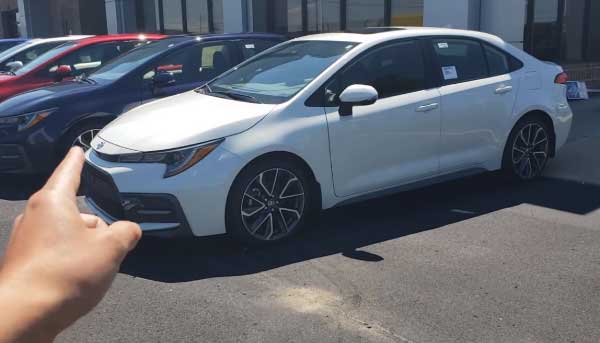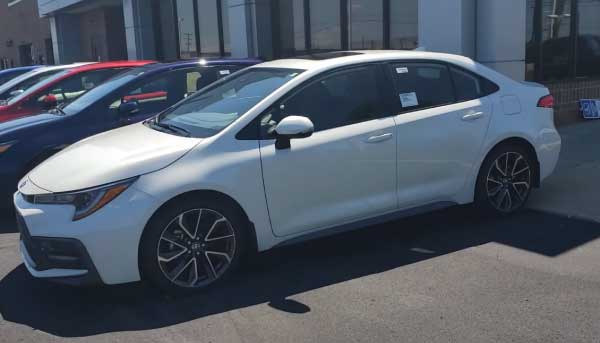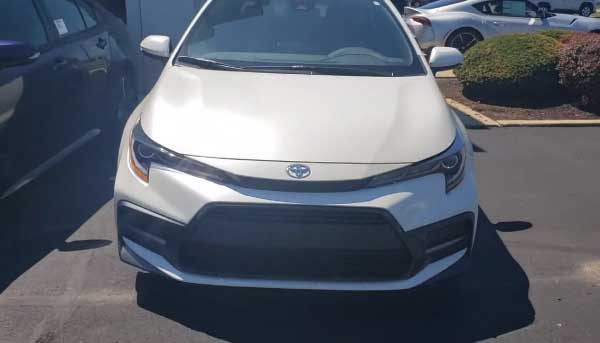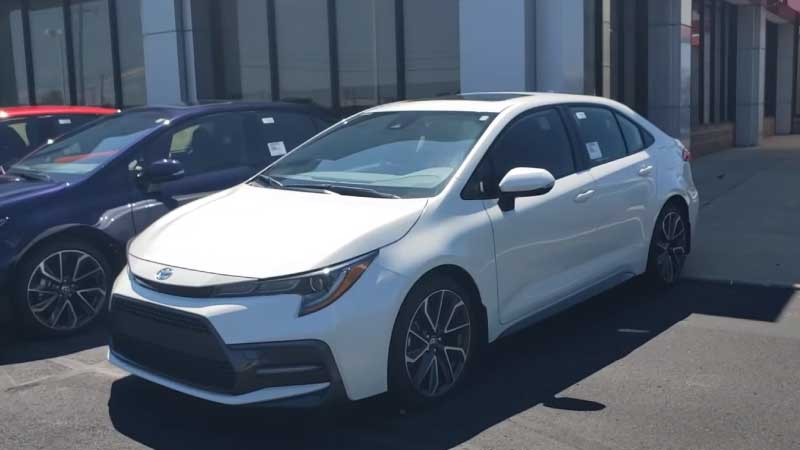Does Bumper to Bumper Warranty Cover Windshield: You Should Know
Ever been cruising down the highway, enjoying your favorite tunes, when whack! – a stray stone decides your windshield is its next target? We’ve all been there. Now, amidst the annoyance, there’s that looming question, “Is this covered under my car’s bumper to bumper warranty?”
If you’re scratching your head, wondering about the extent of that all-encompassing ‘bumper to bumper’ term, you’re in the right place.
Generally, a bumper to bumper warranty does cover most parts of a car, including the windshield. However, this typically applies to defects from the manufacturer and not damages like rock chips or accidents. It’s essential to check the specifics of your vehicle’s warranty for detailed coverage.
Let’s dive deep into the world of warranties and decipher whether that trusty shield (read: windshield) up front is part of the deal.
Does Bumper to Bumper Warranty Cover Windshield?

When you hear the term “bumper to bumper”, it’s easy to envision a warranty that wraps around your vehicle, safeguarding every nook and cranny. But how inclusive is it really, especially when we talk about that large piece of glass up front – the windshield?
Situations where the windshield is covered
- Manufacturing Defects: One of the primary situations where your windshield is protected under a bumper to bumper warranty is if there’s a manufacturing defect. This could mean anything from air bubbles inside the glass, distortions that impair vision, or premature seal deterioration.
- Installation Issues: If your car’s windshield isn’t correctly installed – maybe it’s not sealed properly or is misaligned – and you notice this shortly after purchasing the car, the warranty usually kicks in.
- Internal Electronics Malfunction: Modern windshields often come with integrated tech features, like rain sensors or heads-up displays. If these features malfunction due to no fault of your own, the bumper to bumper warranty may cover repairs or replacements.
Exclusions and reasons why a windshield might not be covered
- Accidental Damage: Let’s start with the most common scenario – road mishaps. If a rock flings onto your windshield while driving or if it gets damaged in an accident, the bumper to bumper warranty won’t cover it. These damages fall under the realm of car insurance instead.
- Normal Wear and Tear: Small scratches, minor chips, or wear that comes with the regular use of the vehicle isn’t usually covered. Over time, all parts of a car endure some wear, and the windshield is no exception.
- Improper Care or Maintenance: If damages arise because of using abrasive cleaning tools, chemicals, or not following recommended care guidelines, the warranty won’t come to your rescue.
- Aftermarket Modifications: If you’ve added any aftermarket films or tints to your windshield, and a problem arises because of that addition, the warranty may become void for the windshield-related claims.
While a bumper to bumper warranty is extensive, it doesn’t mean it covers every situation. It’s always a wise choice to familiarize yourself with the specifics of your vehicle’s warranty and understand what’s included and what’s left out.
Bumper to Bumper vs Other Warranties: Comparative Table

| Coverage Type | Bumper to Bumper | Powertrain | Extended Warranty |
|---|---|---|---|
| Duration | Typically 3 years or 36,000 miles (varies by manufacturer) | Often 5-10 years or 60,000-100,000 miles | Varies: Can extend beyond standard warranties |
| Engine | Covered | Covered | Typically covered |
| Transmission | Covered | Covered | Typically covered |
| Drive Systems | Covered | Covered | Typically covered |
| Electronics | Covered | Not Covered | Typically covered |
| Interior | Covered | Not Covered | Select coverage, depending on the plan |
| Exterior | Covered | Not Covered | Select coverage, depending on the plan |
| Windshield (Manufacturing Defects) | Covered | Not Covered | Typically covered |
| Windshield (Accidental Damage) | Not Covered | Not Covered | Not typically covered (unless special provisions apply) |
| Maintenance | Sometimes includes routine maintenance for a limited time | Not Covered | Sometimes available as an add-on |
Key Takeaways:
- Bumper to Bumper: This is the most comprehensive warranty, covering almost everything between the front and rear bumper of your car. However, its duration is shorter than powertrain warranties.
- Powertrain: Primarily focuses on the vehicle’s propulsion system, like the engine and transmission. It doesn’t include electronics, the interior, exterior, or items like the windshield unless there’s a defect directly linked to powertrain components.
- Extended Warranty: This is a purchased warranty that begins after the original bumper to bumper warranty expires. Coverage varies widely depending on the plan and provider. It can be as comprehensive as a bumper to bumper or more limited.
When considering windshield coverage, the bumper to bumper warranty typically covers manufacturing defects but not accidental damages. Extended warranties might offer similar protection, but it’s crucial to read the specifics of any plan.
Factors That Can Influence Warranty Coverage for Windshields
When windscreen cracks, chips, or other issues arise, the first thing that pops into many car owners’ minds is: “Is this covered by the warranty?” The answer isn’t always straightforward. A variety of factors can influence whether your windshield’s woes are covered or if you’ll need to dig into your pocket. Let’s examine some of these key determinants.
1. Manufacturer Stipulations
Manufacturers set the rules of the game when it comes to warranties. Each has its own set of terms and conditions that define what is covered and what isn’t. Some may offer generous coverage for windshields, while others might limit it to very specific circumstances.
Some high-end or specialty models might have unique stipulations compared to a manufacturer’s standard line. In some cases, warranty specifics can vary depending on the region or country of purchase due to differing regulations or consumer protection standards.
2. Accidental Damages vs. Manufacturing Defects
The cause of the damage to your windshield plays a significant role in determining coverage.
- Accidental Damages: These are the unplanned mishaps – the rock that springs up from the highway, the branch that falls just wrong, or even the misjudged baseball from a neighbor’s game. Accidental damages are typically not covered under warranty but rather fall under comprehensive car insurance.
- Manufacturing Defects: If your windshield has issues because of the way it was made (think bubbles in the glass, warping, or faulty sealing), then this falls under manufacturing defects. Such defects are typically covered under a bumper to bumper warranty. But remember, you’ll need to prove the defect wasn’t caused by external factors or misuse.
3. Wear and Tear Considerations
Every car undergoes natural wear and tear as it ages. But there’s a line between what’s considered natural aging and what’s a defect. Tiny scratches from cleaning, minor chips from daily driving, or a slightly faded tint from sun exposure may not be covered, as they’re seen as part and parcel of owning and using a car.
However, if your windshield starts to warp, delaminate, or show other unusual signs of degradation prematurely and without external causes, this could be a defect, making it eligible for warranty coverage.
How to Claim Warranty for Windshield Damages: Step by Step Process

If you believe it’s a result of a manufacturing defect or covered issue, your warranty might be your hero. But how exactly do you navigate the somewhat intimidating waters of warranty claims? Let’s break it down step-by-step.
Step 1: Steps to Make a Claim
a. Assess the Damage: Before jumping into the claim process, take a moment to assess the damage. Is it likely from a manufacturing defect or something that falls under the purview of your warranty? Remember, accidental damages are typically insurance matters.
b. Review Your Warranty: Dig out your vehicle’s warranty documentation. Look for sections that pertain to windshield or glass coverage. This will give you a preliminary idea if your issue might be covered.
c. Contact Your Dealership: The dealership where you purchased your car is your first point of contact. Explain the situation to them. They’ll guide you on the next steps and may even schedule an inspection.
d. Schedule an Inspection: If required, bring your vehicle in for an inspection. The dealership or manufacturer’s representative will assess the damage to determine if it falls under warranty.
e. File the Claim: If the inspection determines that the damage is likely under warranty, the dealer will usually handle the paperwork and file the claim on your behalf.
Step 2: Documentation Required
a. Purchase Documents: Always keep your vehicle’s purchase invoice or bill of sale. This proves the date of purchase and, by extension, the warranty’s validity period.
b. Warranty Booklet: This contains all the terms and conditions, which will be crucial for reference.
c. Service Records: Regular service records can sometimes act in your favor, showing that the car was well-maintained and the damage isn’t due to neglect.
d. Photos: Clear pictures of the windshield damage can be beneficial, especially if the damage evolves over time.
e. Incident Reports: If the damage was noticed after a specific incident, a report or written account of what happened can provide context.
Step 3: Possible Outcomes and Resolutions
a. Approval and Repair/Replacement: If your claim is approved, the dealership or an authorized service center will repair or replace the windshield at no cost to you.
b. Partial Coverage: In some cases, the warranty might cover a portion of the costs, requiring you to pay the difference.
c. Claim Denial: If it’s determined that the damage isn’t due to a covered defect or issue, the claim might be denied. In such cases, you might have to explore other avenues like insurance or pay out-of-pocket.
d. Extended Assistance: Even if the warranty doesn’t cover the damage, some manufacturers or dealerships, in a bid to maintain customer goodwill, might offer a discount or other assistance.
FAQs: Frequently Asked Questions
Are rock chips in windshields covered under bumper to bumper warranties?
Rock chips resulting from road debris or other external factors are generally not covered under bumper to bumper warranties. These warranties primarily cover manufacturing defects or issues arising from the materials or workmanship of the vehicle. However, damages caused by external events like rock chips typically fall under comprehensive car insurance, assuming you have that coverage.
How long does a typical bumper to bumper warranty last?
The average duration for a bumper to bumper warranty, often referred to as a comprehensive or new vehicle warranty, is usually 3 years or 36,000 miles, whichever comes first. However, this duration can vary by manufacturer. Some luxury brands may offer longer warranties, while others might have shorter durations. It’s always best to check the specifics in your vehicle’s documentation.
Can I purchase additional windshield protection under a bumper to bumper warranty?
While the bumper to bumper warranty itself is pretty standardized, many manufacturers or dealers offer extended warranties or protection packages that can include additional coverage for items like windshields. These might come in the form of specialized glass or windshield coverage plans. It’s worth discussing options with your dealer when purchasing your vehicle or checking aftermarket warranty providers.
What is the difference between a warranty claim and an insurance claim for windshields?
A warranty claim for windshields is based on asserting that the damage or issue arose due to manufacturing defects or material failures. It’s a claim against the vehicle manufacturer’s promise to deliver a defect-free product. An insurance claim, particularly a comprehensive insurance claim, addresses damages caused by external events like accidents, road debris, vandalism, or natural disasters. The former concerns the carmaker’s responsibility, while the latter deals with risk protection against unforeseen events.
Do all car brands offer windshield coverage under their bumper to bumper warranties?
Most car brands will cover windshield issues under their bumper to bumper warranties if the problem is due to a manufacturing defect or poor workmanship. However, coverage specifics can vary from one brand to another. Not all damages, especially those from external factors, are covered. Brands might also have variations based on models or regional offers. As always, it’s crucial to consult the specific warranty details for your vehicle.
If my windshield warranty claim is denied, what are my next steps?
If your claim is denied, consider the following options:
- Appeal: Some manufacturers might have a process to appeal denied claims, especially if you can provide additional evidence or documentation.
- Insurance: If you have comprehensive car insurance, it might cover the damage, particularly if it’s due to external events.
- Out-of-Pocket Repairs: If all else fails, you may need to pay for the repairs or replacement yourself.
- Second Opinion: Consider consulting another dealership or service center. Sometimes, different technicians might have varied opinions on what caused the damage.
Conclusion
Always remember, warranties are about manufacturing promises, while insurance is about protection from the unexpected. When in doubt, always check specific warranty details with your car manufacturers or dealers, and consider additional coverage options for complete peace of mind.

